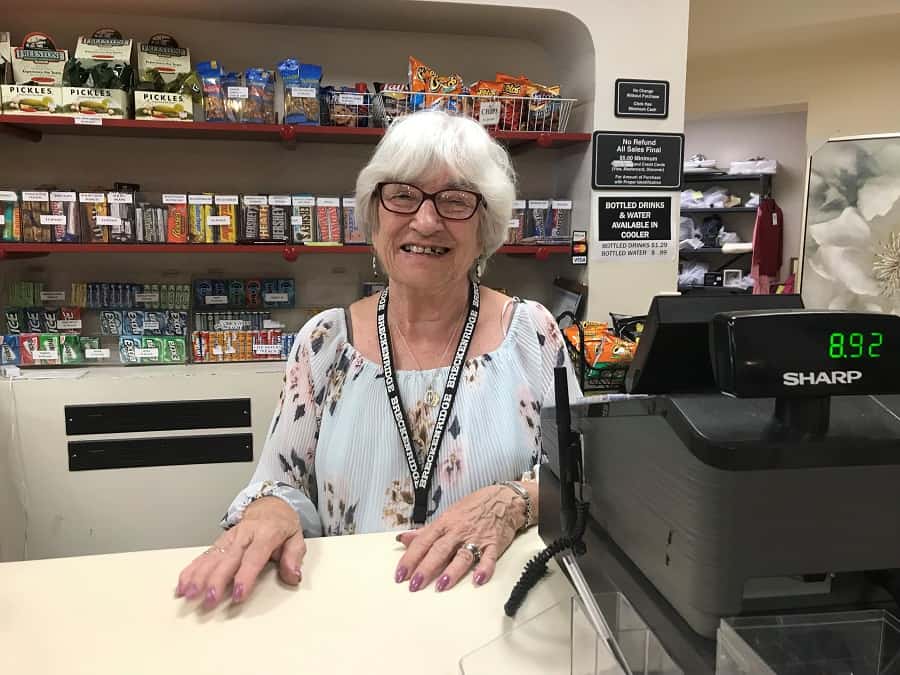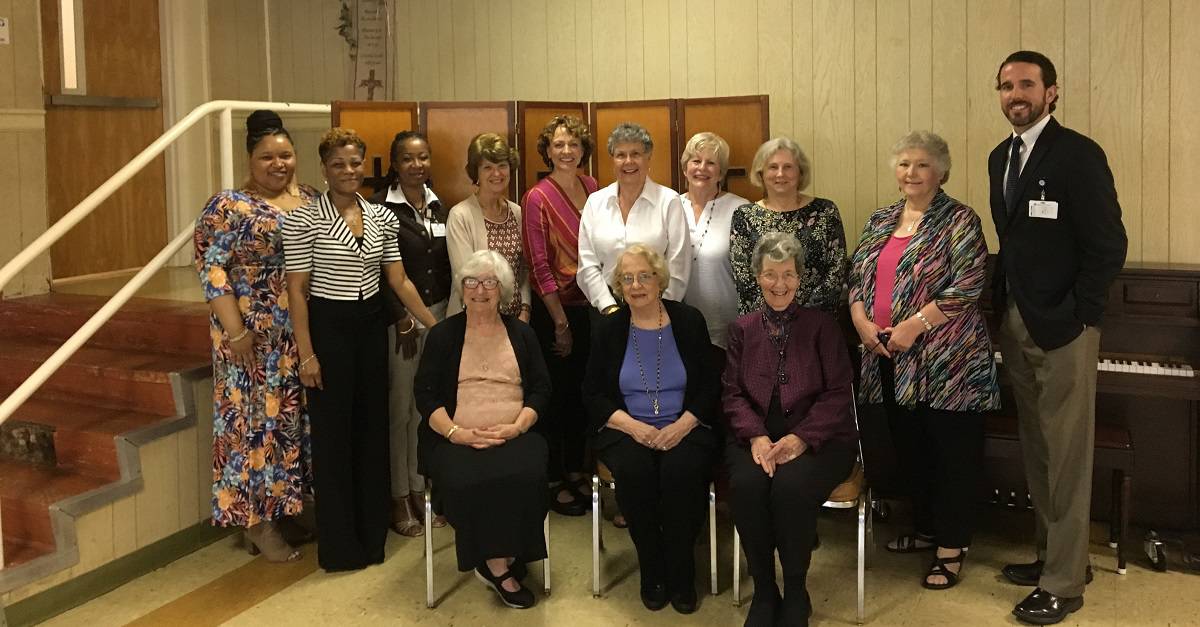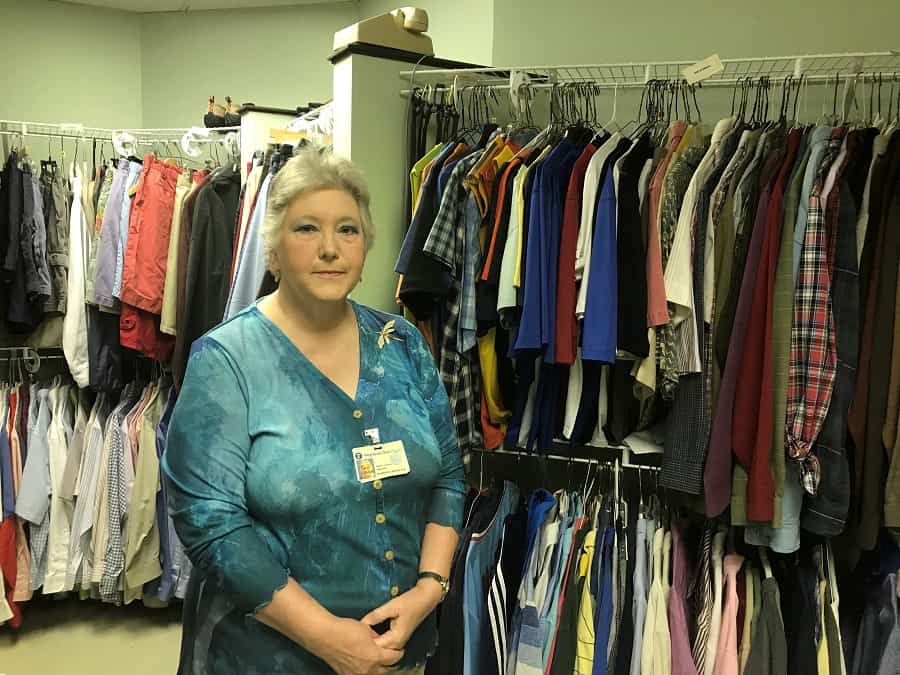When young people needed support pursuing higher education, when patients’ worried families needed clean clothes, when employees and visitors needed a quiet place to reflect and pray, one organization has stepped up at Regional One Health time and again.

Johnson Auxiliary President Jane Reynolds works at the organization’s gift shop, which raises money for scholarships, hospital equipment and other programs the Auxiliary supports.
The John K. and Katherine Johnson Auxiliary formed in 1973 after a Presbyterian woman’s group toured the then John Gaston Memorial Hospital-City of Memphis Hospital Complex and found, as Auxiliary Director Barbara Bowling put it, “a hospital the community had forgotten.”
Today, the Auxiliary has expanded to include men and women of various backgrounds, and its work has evolved as needs have emerged. Its main focus is the volunteer-run gift shop through which it raises money for projects within the health care system.
Over the years, an increasingly important project has been the Jency Mitchell Scholarship, which helps children of full-time Regional One Health employees pursue education in medical fields.
“The scholarship is one of the most important things we do,” said Jane Reynolds, the retired registered nurse who serves as Auxiliary president.
“We commit to dedicating $6,000 a year to provide four scholarships, and other groups provide funding as well. Then, we help interview the candidates. This year we had 12 applicants, and there wasn’t one of the 12 who didn’t deserve it. Fortunately, we had enough funding that they were all accepted.”
The scholarship, named for a former chief nursing officer at Regional One Health, is a way to support future doctors, nurses, pharmacists, etc. – and possibly even bring them into the Regional One Health family. Bowling noted the Auxiliary also raises money to offer signing bonuses for scholarship recipients who come to work at the health care system.
It’s all made possible by the bustling gift shop that serves Regional One Health’s patients and their family members, employees and other hospital visitors.

This past year, the Auxiliary donated $18,000 to the Regional One Health Foundation. Since it opened the gift shop in 1983, it has donated over $524,000.
In the early ‘80s, hospital administrators approached the Auxiliary about opening a gift shop to fundraise for various system needs. The Auxiliary had just completed another goal, raising money for the Alice Davies Chapel to give employees, patients and families a place to pray and reflect during times of need, and they welcomed the new challenge. The gift shop opened in 1983.
Since then, Bowling said, the Auxiliary has donated over $524,000 total, including $18,000 last year: “When people shop in our gift store, the profits go back to the Regional One Health Foundation, so the money stays here in the hospital to support different areas,” she explained.
That has included a meditation room in critical care waiting, burn rehab beds, adult special care clinic equipment, etc. It also funds ongoing work of the Auxiliary throughout the year that serves the hospital’s patients and their families with needed clothing and hygiene items and other social service needs. The Auxiliary started a Last Resort Fund a number of years ago that the hospital’s social workers use to assist patients upon discharge from the hospital if they can’t find assistance elsewhere for needs like transportation home from the hospital, prescription co-pays, food, utility assistance, etc.
One of the earliest projects the Auxiliary initiated was to provide a clothes closet to meet the needs of patients and their immediate family members and provide both adult and baby clothing items. The closet was named the Mary Love Clothes Closet in 1978 to honor an Auxiliary volunteer who dedicated her time and efforts to coordinate and work with the clothes closet for many years. The closet is available 24/7 to provide clean clothes and hygiene items for patients and families who often rush to the hospital without having time to pack a bag.
“Patients’ clothing may be damaged by their medical care, and they may not have clothes to go home in. Or, family members show up with only the clothes on their back,” Bowling said.

Auxiliary Director Barbara Bowling said the Mary Love Clothes Closet, named for a longtime Auxiliary volunteer, provides clean clothing and hygiene products for patients and their family members.
“The Auxiliary started the clothes closet in 1973 to meet the needs of patients that included both adult and baby clothing as well as to assist family members of patients who needed emergency clothing, similar to a situation when an Auxiliary volunteer visited the critical care waiting room and met a woman in a formal dress and high heels who had been there several days. Her husband had been in a car accident. They had been planning to go out, but when she heard, she got in the car and came straight here.”
By that point, the woman had blisters on her feet. Volunteers found her a sweatshirt, jeans and tennis shoes.
It’s yet another example of the Auxiliary seeing a need and stepping up to help. Reynolds said it is fulfilling work: “It’s rewarding because you get to help out in a lot of ways,” she said. “I enjoy meeting all the different people who come in; hearing their stories and helping them out.”
They’re actively seeking new volunteers to continue supporting patients, families and staff.
Volunteers must be high school graduates, pass the hospital’s screening process, and commit to at least one four-hour shift in the gift shop or assist with the Auxiliary’s social service areas per their volunteer schedule. Volunteers have also helped to work on projects like decorating the hospital for the holidays, food drives, health education and more. “It’s a great way to give back to the community and help people in times of need,” Bowling said.

